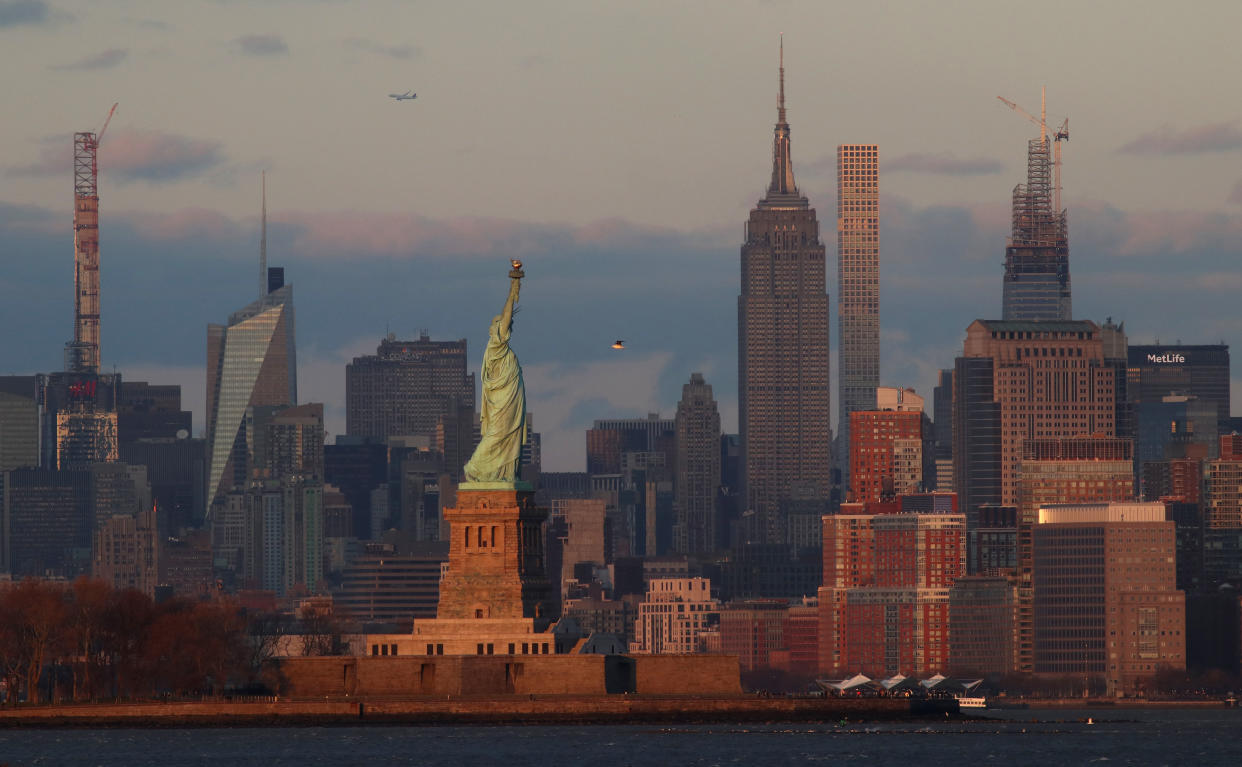Why America’s economy needs immigrants

The growth of every economy depends upon increases in population. The U.S. has been a standout among major nations for its growth in population. Countries with lower birthrates, including Japan and several in Europe, have economic growth well below their long-term trends.
The U.S. economy has become increasingly reliant on immigration for overall population growth and increases in the labor force. Over the last decade, 42% of the net growth in U.S. population, and 54% of the net growth in the workforce, can be attributed to immigration. During the same period, the birth rate of native-born Americans has decreased, and the death rate has increased, due to aging. Immigrants now comprise roughly 15% of the total U.S. population. And because they tend to be younger than native-born Americans, immigrants now comprise about 17% of the U.S. workforce.

Immigrants are heavily represented in highly-skilled areas such as IT, mathematics, engineering and healthcare. The native-born pipeline has proven inadequate at filling these positions. Foreign-born workers are also found in many low-end service jobs that are not easily scaled by automation. These occupations, at both ends of the skills spectrum, are projected by the U.S. Department of Commerce to grow rapidly in the coming decade.

Immigrant scientists and engineers have long played an important role in U.S. research and innovation. In 2017, about 34% of scientists and 55% of engineers with doctorate degrees working in the U.S. were foreign born. Over the last decade, 14 of the 37 U.S.-based Nobel Prize winners in the natural sciences were immigrants. It is important to note, however, that there has been a sharp decline in visas for both foreign students (-44%) and specialty workers (-21%) since 2015.

Fulfilling the American Dream
Many immigrants come to the U.S. as young adults and tend to earn less than native-born Americans. They pay less in taxes, at least at first, but also receive less in assistance for programs such as Social Security. The second-generation of immigrants (those with at least one foreign-born parent) jump ahead in terms of education, language skills and earnings. This second generation pays, on average, higher taxes than their parents and more than third plus-generation Americans.

Immigrants have helped spur household formation in recent years, accounting for 43% of the net increase in households between 2000 and 2017. And household formation bolsters economic growth. Home ownership has a notable multiplier effect involving elements such as construction, financing activities, and aftermarket spending. Local governments raise significant revenues from housing, in the construction phase through fees and afterwards from property taxes. These revenues form the foundation in many communities for spending on public services, such as education and infrastructure.
Business formations have also been bolstered by the entrepreneurial activity of immigrants, both first- and second-generation. About 30% of the business owners in two sectors with low barriers to entry, accommodation and food services, and retail trade, are foreign born. But immigrants are also heavily represented to several high-tech industries. For example, they own about 29% of the companies in computer systems design and service, and 23% each in software publishing and scientific research services.
US immigration policy has swung widely: now, increasingly restrictive
Other than Native Americans, the United States is a country of immigrants and their descendants. The history of immigration policy shows many significant shifts since colonial times. These affected not only the general approach, but also specific restrictions targeted at individuals by country of origin, race and other characteristics. After the U.S. prohibited the importation of slaves in 1808, immigration consisted mostly of individuals from northern and western Europe. This began to shift in the second half of the 19th century, as immigrants came from other areas affected by turmoil, including Jews escaping the Russian Empire and Italians fleeing poor economic conditions. Asians were critical participants in projects such as the Transcontinental Railroad, but many were forced to leave when construction was completed.

The immigration doors swung open after World War I, although they were slammed shut in the mid-1920s. They were widely reopened again in the 1960s when the current immigration structure was enacted. Since then, there has been increased diversity in the countries of origin, with many immigrants coming from Asia and Latin America. Since 1965, annual legal immigration is about 0.3% of the nation’s total population. This is less than half of the experience of prior periods of immigration.
A change in course
Against this backdrop, the Trump Administration has adopted a restrictive approach to immigration. Although much media attention has focused on unauthorized immigrants, the Administration has promulgated several Executive Orders which, if implemented, will affect both legal and unauthorized immigration. These include tightening the rules for those seeking asylum in the U.S. and making it difficult for immigrants to receive social services, including healthcare, without fear of losing a path to permanent status in the U.S. Although some of these proposed changes are still wending their way through the judicial system, there has already been a dampening influence on individuals seeking visas for study, work and tourism in the United States with sharp declines seen in each category. These are not positive developments for the U.S. economy.
Abby Joseph Cohen, CFA, is a senior investment strategist at Goldman Sachs.
Read more:
The critical factors behind NYC’s economic growth and its ‘spillover effect’
The last 8 years of labor market improvement have been disturbingly uneven

